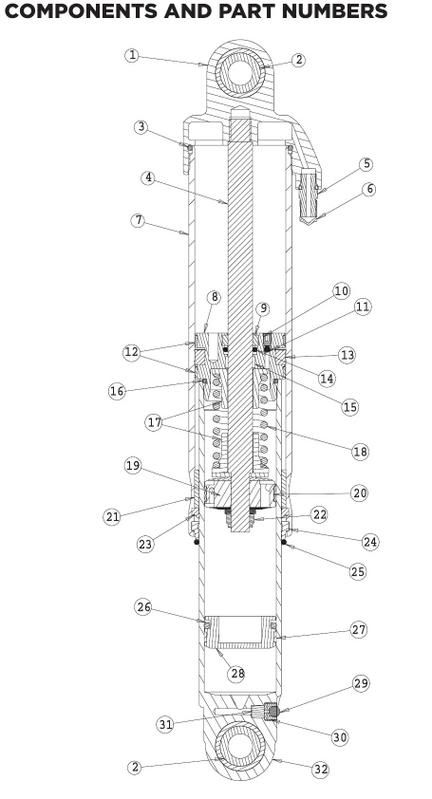From what i was told from the guy who bought the shocks (has been king of kings at Jackson) was that you don't have to have the exact perfect length shock. He told me just to deflate the shocks when installing them, and then pump them up once installed till you get the desired feal for them.
First of all... this is all meant to try to be helpful and to discuss the topic...please do not take it in any other way.
If that is what works for you... stick with it. (sincerely)
Here are my thoughts on this for what it is worth.
Something to ponder, but definitely just IMO.
If you can't get the shock into the suspension when it is pumped up... something is wrong and the shock would be trying to overextend the suspension when you deflate to install and "pump-up".
RMSHA sleds are generally low mileage sleds that get well maintained and are checked for cracks etc. Also, their setups are very specific for the needs on a hill climb course. Most riders are not the best technicians...some are though, to be fair.
It is sometimes possible for someone selling the shocks to tell you "Everything works this way...dont worry".... when sometimes this is not the optimal setup you think you are getting.
If that is the type of riding (RMSHA) that you are doing.. then this should be the type of advice you should seek.
There are a couple of problems that can happen with too long of a shock.
1) The ball joint is over rotated when extended fully. This full extension happens a lot when you are riding the sled, anytime you go over a bump or thru the pow or climbing jumping. This binds up the steering when the front is extended, and places a lot of leverage and stress on the ball and end of the A-Arm... This leads to premature wear on the ball and socket and can cause cracks in the A-Arms.
I'm helping my neighbor with his 2010 Dragon 800..... on the stand at a his house right now. He got a set of shocks from a 2010 Assault (that swapped out to Floats). With the weight off the sled, the steering binds slightly and is difficult to turn... and the lower ball joints are maxed out. The ride height (which should be around 9"-9.5") is now on around 11".
2) With longer shocks, ride height is not correct which will give you higher steering effort and not work in harmony with the rear skid as well.
With the correct ride height
AND the proper pressures/valving... the sled handles better.
As an example... An 18" extended length EVOL-X with the
identical pressures and settings of a 17" Evol-X shock...the 18" shock on the same sled would have a higher ride height than the 17".
To get the ride height correct on the 18" shock..you would have to drop the pressure in the main chamber and try to compensate for a softer ride by increasing the compression setting and dropping the rebound adjutment... but the end result is different since spring forces/rates do not equate directly with compression and rebound settings... PLUS you would still have the suspension extension/binding issues whenever the front of the sled is unloaded (like when you gas the sled or go over any thing etc)... All of these get you away from ideal balance in the sled.
A wider front end uses a longer shock... a narrower front end uses a shorter shock.... unless the A-Arms are specifically made to use that shock (as in the Timbersled 38" wide front end... it uses the stock RMK length shocks)
The front and rear suspensions have to work as a system...together.
I talked with Ryan Zolinger about this at Jackson just this year, at length, as well as Max from TCP, Allen Mangum from Timbersled and Mark Holz on other occasions as well. All agreed that the correct length shock just flat works better.
Here is a quote from the HRP instructions... all the suspension mfgs that I've talked to agree with this.
HOLZ RACING PRODUCTS:
Proper front ride height is crucial to the proper performance of your rear suspension. Before initial set-up or subsequent tuning of any rear suspension component you must ensure proper front ride height. For proper measurement of the front ride height, the sled must be on level ground—ideally a cement shop floor or driveway. Front ride height can be measured at the chassis where the lower a-arm attaches. Before taking a measurement, load the front of the sled and then allow it to spring back to its neutral position. Ride height measurement should be between 9 and 9 ½ inches.
-Higher is not better. Contrary to popular belief, raising the front end of your sled more than what is specified will actually hinder the performance of your Holz rear suspension.
This would be true for the Mtn Tamer... EZ-Ride...Alpha-X...Stock...K-Mod... M-10 and others.





